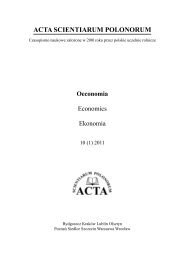Lubna landfill
Lubna landfill
Lubna landfill
- No tags were found...
You also want an ePaper? Increase the reach of your titles
YUMPU automatically turns print PDFs into web optimized ePapers that Google loves.
FIG. 21 Mineral filter layers used for peripheral and “finger” pipe drainages the <strong>Lubna</strong> <strong>landfill</strong>The terrain surrounding the <strong>landfill</strong> has a low gradient. Therefore a number of control sinks (every25-50 m) along the peripheral drain along with two pumping stations have been designed toprotect the drainage system against silting up. The collected leachate flows to the water cleaningplant in the south-eastern corner of the <strong>landfill</strong> and finally to the surface streams.Additional drainage was designed on the slopes and along technological roads. The open waterreservoirs were designed for the rain water flow from the <strong>landfill</strong> slopes (Fig. 4).8.3 Mineral capping systemTaking into account the high slope inclination, the constructed degassing system and introductionof plants on the <strong>landfill</strong> surface, the former planned capping system with a geomembrane wasreplaced with clay mineral and compost layers. The capping system of the <strong>landfill</strong> surface wasconstructed successively with the increase, of the <strong>landfill</strong> height.The compacted clay sub-layers of the mineral capping have the thickness of 03 m. The minimaldegree of compaction was I s = 0.92. A few clay layers were created to protect embankment forwaste layer disposal (Fig. 22). The scheme of the mineral capping system on the <strong>landfill</strong> slopes ispresented in Fig. 23.18
















